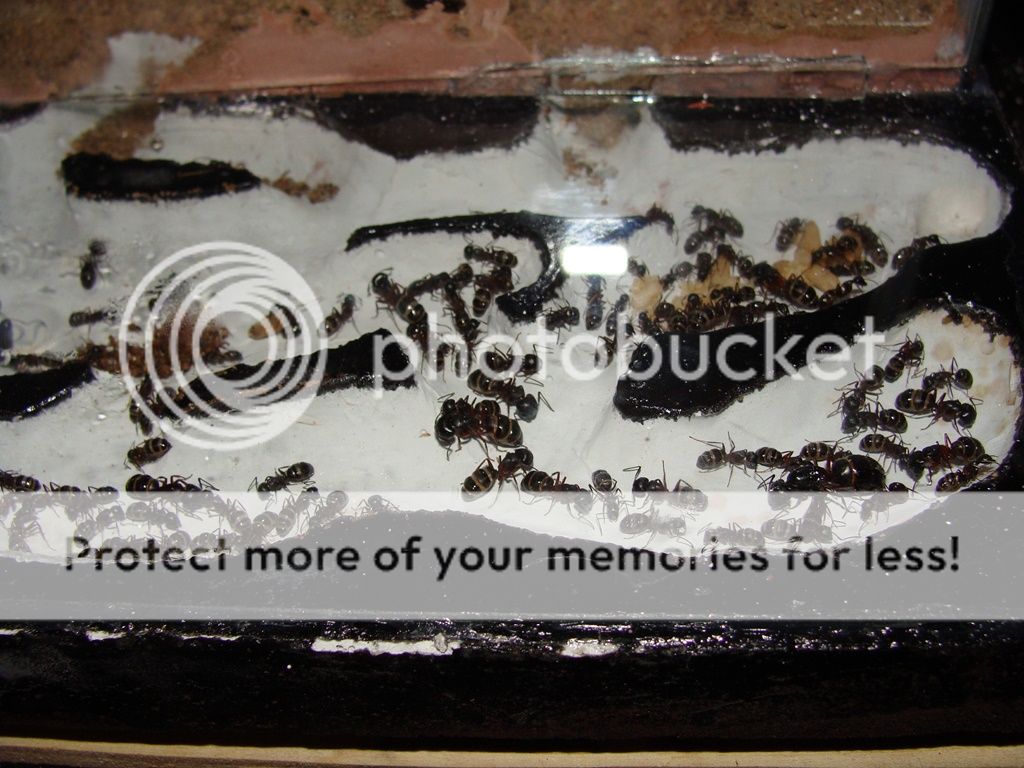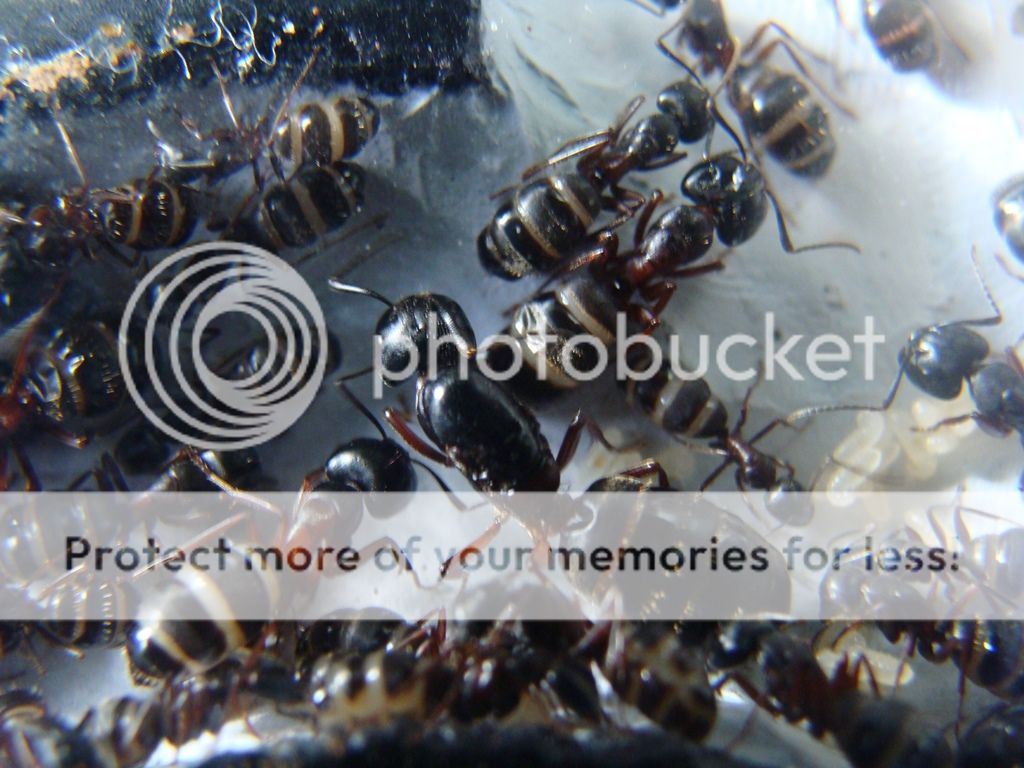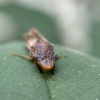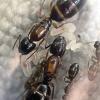Camponotus herculeanus fly by the hundreds every spring in Alberta, Canada. I picked up a few, but only kept one queen in the end. I kept the most energetic queen.
Ok, psycho would be a better term. She chewed through an entire cotton ball, and then proceeded to chew through half of a foam plug before settling down and laying eggs.
While cutting grass in late July I knocked over a 2x4 board which happened to have a Camponotus herculeanus nest in it. I stole about 25 pupae. I took two glass table coasters and made a "flat test tube" setup. Works wonderfully well.
Early August most of the pupae have eclosed and need a bit bigger home. So I found a small critter keeper in the dollar store and made a formicarium and outworld all in one. I also stole another dozen pupae
Late August I moved them into a larger formicarium. These gals are tough to move. Light doesn't faze them. I took the heating cable from their old nest and put it under the new one, they followed the heat within the hour (my room sits at 18C).
Just after the move:
Picture from late September.
They do have larvae in several locations. These are this queens larvae. I guess we will see if they are workers or alates come spring. I can't believe how slowly they grow, even with the heating cable.
What good is a fat major? If a fruit fly ever manages to get into the tunnels, the smallest workers kill it.
Yeah, they aren't starving...
After eating hummingbird nectar, they won't eat honey anymore. Spoiled brats. They love fruit flies and crickets. They nibble on mealworms and various other things.
Absolute slobs though, they carry the garbage from the outworld and put it in a spare chamber.

















































